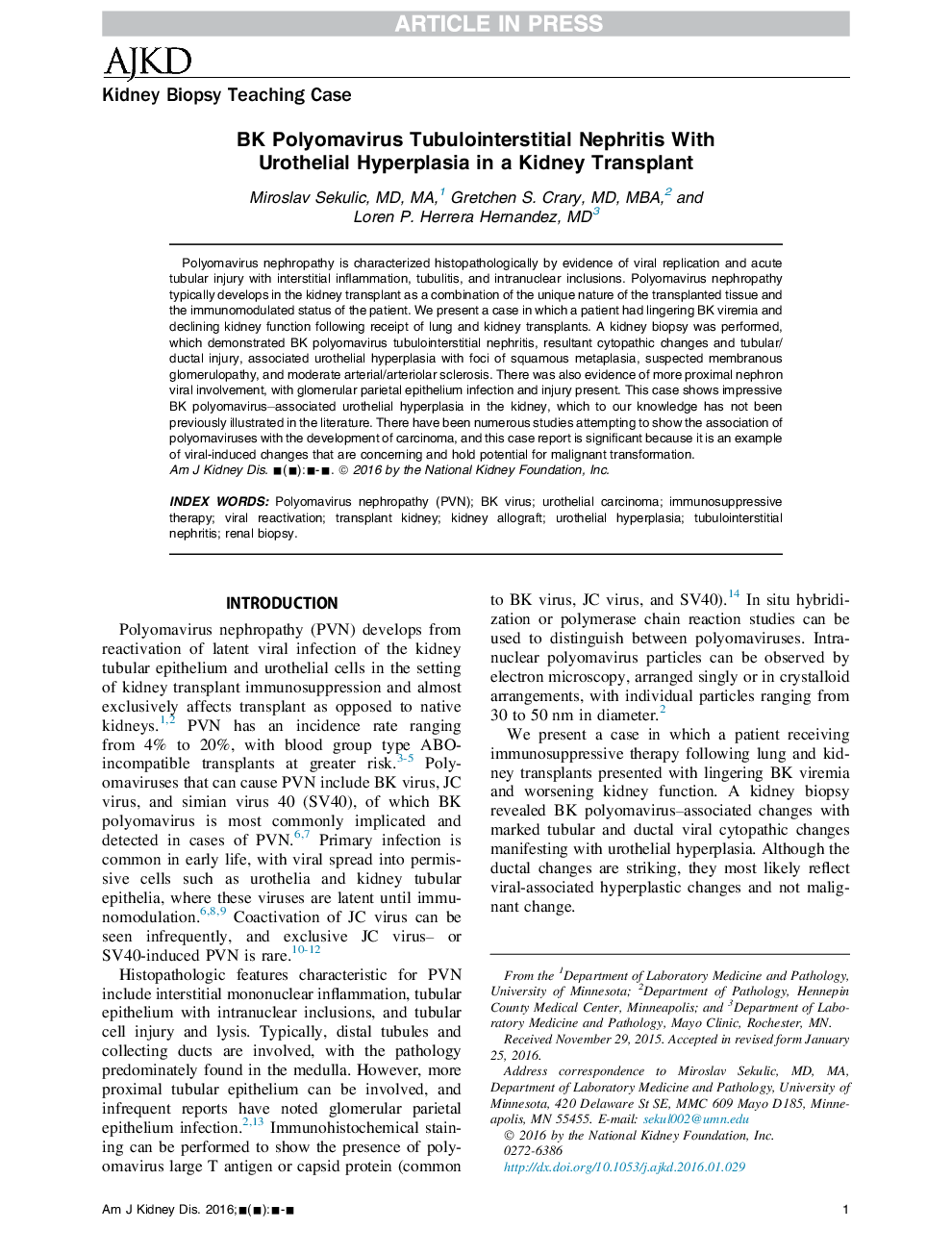| Article ID | Journal | Published Year | Pages | File Type |
|---|---|---|---|---|
| 3847363 | American Journal of Kidney Diseases | 2016 | 5 Pages |
Abstract
Polyomavirus nephropathy is characterized histopathologically by evidence of viral replication and acute tubular injury with interstitial inflammation, tubulitis, and intranuclear inclusions. Polyomavirus nephropathy typically develops in the kidney transplant as a combination of the unique nature of the transplanted tissue and the immunomodulated status of the patient. We present a case in which a patient had lingering BK viremia and declining kidney function following receipt of lung and kidney transplants. A kidney biopsy was performed, which demonstrated BK polyomavirus tubulointerstitial nephritis, resultant cytopathic changes and tubular/ductal injury, associated urothelial hyperplasia with foci of squamous metaplasia, suspected membranous glomerulopathy, and moderate arterial/arteriolar sclerosis. There was also evidence of more proximal nephron viral involvement, with glomerular parietal epithelium infection and injury present. This case shows impressive BK polyomavirus-associated urothelial hyperplasia in the kidney, which to our knowledge has not been previously illustrated in the literature. There have been numerous studies attempting to show the association of polyomaviruses with the development of carcinoma, and this case report is significant because it is an example of viral-induced changes that are concerning and hold potential for malignant transformation.
Keywords
Related Topics
Health Sciences
Medicine and Dentistry
Nephrology
Authors
Miroslav MD, MA, Gretchen S. MD, MBA, Loren P. MD,
